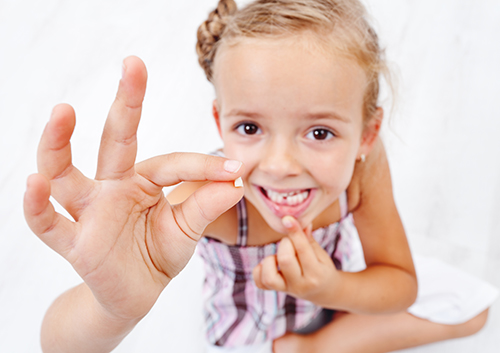June 29th, 2022

Inflamed gums are a fairly common dental issue, but unfortunately, many people don't take the problem seriously enough. If you ignore inflamed gums and continue your usual routine, you could be encouraging a much more severe inflammation problem, and the pain that goes along with that. Fortunately, it is quite easy to relieve inflamed gums if you use the tips below.
Use Soft Bristles
A soft-bristle toothbrush - the softest you can buy - is a must for anyone with inflamed gums. Anything that makes contact with your gums can cause you pain, so fine and soft bristles are always the best choice.
Use Sensitive Formula Toothpaste
The toothpaste marketed as “Sensitive Teeth Formula” contain special ingredients to help relieve sensitivity. When your gums are inflamed, even light brushing can cause some pain. Using a special toothpaste will help reduce that pain and make it easier to brush your teeth effectively. The effect becomes stronger as you use the toothpaste more, so use it for each brushing.
Visit Our Office
If your gums remain swollen for more than a few days or a week, set up an appointment with Dr. Pohl. There is a long list of conditions that could be causing your swollen gums, everything from gum disease to pregnancy, so you need to find out where your issue is coming from. Most of the time, Dr. Pohl can easily treat the swollen gum issue at our Crescent Springs office, or can give you an effective treatment to take home.
June 22nd, 2022

While the last baby teeth generally aren’t lost until age ten or 11, most children stop believing in the tooth fairy by the time they're seven or eight. Of course, children are more than happy to play along with the game when there’s money at stake! While it is impossible to know what the tooth fairy does with all those teeth (are they labeled and stored like museum pieces in a giant fairytale castle?), it is possible to trace the history and myth of the tooth fairy to several cultures and traditions. Dr. Pohl and our team learned about some interesting myths about the tooth fairy!
The Middle Ages
Legend has it that Europeans in the Middle Ages believed a witch could curse someone by using their teeth, so it was important to dispose of baby teeth correctly. Teeth were swallowed, buried, or burned. Sometimes baby teeth were even left for rodents to eat. Despite being pests, rodents were valued for their strong teeth; it was generally believed a tooth fed to a rodent would lead to the development of a healthy and strong adult tooth.
Eighteenth Century France
The tooth fairy myth began to show more characteristics of a conventional fairytale in 18th century France. La Bonne Petite Souris, a bedtime story, tells the strange tale of a fairy that changes into a mouse to help a good queen defeat an evil king. The mouse secretly hides under the evil king’s pillow and defeats him by knocking out his teeth.
Scandinavian Lore
So, why does the tooth fairy leave money under the pillow? The idea of exchanging a tooth for coins originated in Scandinavia. Vikings paid children for a lost tooth. Teeth were worn on necklaces as good luck charms in battle. While the idea of exchanging a tooth for coins quickly spread throughout the rest of Europe, a fierce, horn-helmeted Viking is far cry from the image of a fairy collecting teeth.
While the tooth fairy as children know her today didn’t make an appearance until the 1900s, tooth myths and rites of passage have existed in numerous cultures since the dawn of time.
June 1st, 2022

Regular dental cleanings and checkups at our Crescent Springs office are an excellent way to ensure everything is A-OK in your mouth. There’s a reason the American Dental Association recommends a professional cleaning every six months!
Here’s what you can usually expect during your visit with Dr. Pohl:
- Head and neck examination: The dentist or dental hygienist will look for anything out of the ordinary. He or she will check your lymph nodes and lower jaw joints (also known as TMJs).
- Dental examination: The dentist or hygienist will check for any signs of gum disease, tooth decay, loose or broken teeth, or damaged fillings. We’ll also check your bite, the contact between your upper and lower teeth, and the condition of any dental appliances you’re wearing. Sometimes we’ll also take a set of X-rays.
- Dental cleaning: Plaque and tartar will be removed and the dentist or hygienist will polish your teeth. Your teeth and gums will be flossed, and we’ll also make recommendations about proper brushing and flossing technique if we think you need them.
When you visit our Crescent Springs office regularly, we’ll be able to compare the status of your teeth and gums from one appointment to another. That ensures we will be able to tell where you’re doing great in taking care of your teeth, and if needed, where you’re doing not so well.
If you’re in need of serious help, we might recommend more frequent visits. But remember, the most important factor in your oral health is how you take care of your teeth and gums at home between appointments.
We strive to help our patients achieve and maintain radiant, healthy smiles! If you'd like to know more about exams and cleanings at our Crescent Springs office, or what you need to do at home to maintain an effective oral health routine, please let us know.
May 25th, 2022

Memorial Day is not only a federal holiday in the United States, but it is a day of observance and remembrance of those who died in service. Originally known as Decoration Day, this solemn day has been marked on calendars since the end of the American Civil War as a day to commemorate both the Confederate and Union soldiers who fought and died in the war.
Marking the graves of fallen soldiers with flowers, wreaths, or other tokens has been practiced throughout history, but it wasn't until the mark of the end of the Civil War that a special day was decided upon as the one to spend in remembrance. By 1890, every state in the country was observing Decoration Day. It wasn't until 1967 when the name formally changed from Decoration Day to Memorial Day, in order to encompass all fallen American soldiers in all wars and conflicts. In June of 1968, Congress moved the official date of Memorial Day to the last Monday in May in order to create a three day weekend.
Today, while there is certainly an air of remembrance on Memorial Day, it has become more a day of spending time with family, friends, and other loved ones. This day is also heralded as the start of summer, with many schools finishing for the year around this time. Our team at Buttermilk Dentistry remembers it as a day to take solace and remembered those lost.
Traditional observances of Memorial Day are still held, and they often involve raising the American Flag then lowering it to a half-staff position until noon, and then raising it once again to its full height afterwards. The flag is lowered to remember those who've lost their lives while in service to their country, and then it is raised to signify our willingness to not let their sacrifice be in vain.
From community parades in the Crescent Springs area, backyard cook-outs, and fireworks to formal ceremonies, Memorial Day is commemorated in many different ways. No matter how you choose to spend this day, take a moment to remember those who've lost their lives in an effort to preserve our freedom.







 Website Powered by Sesame 24-7™
Website Powered by Sesame 24-7™